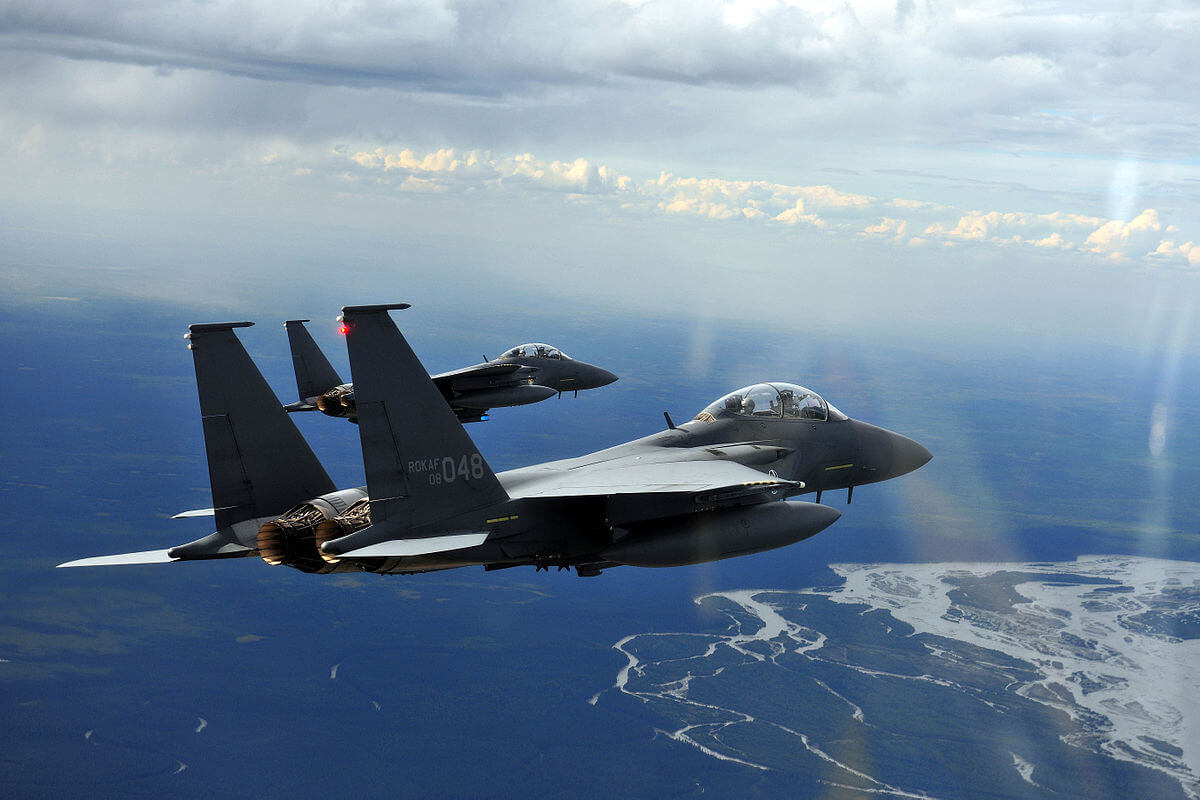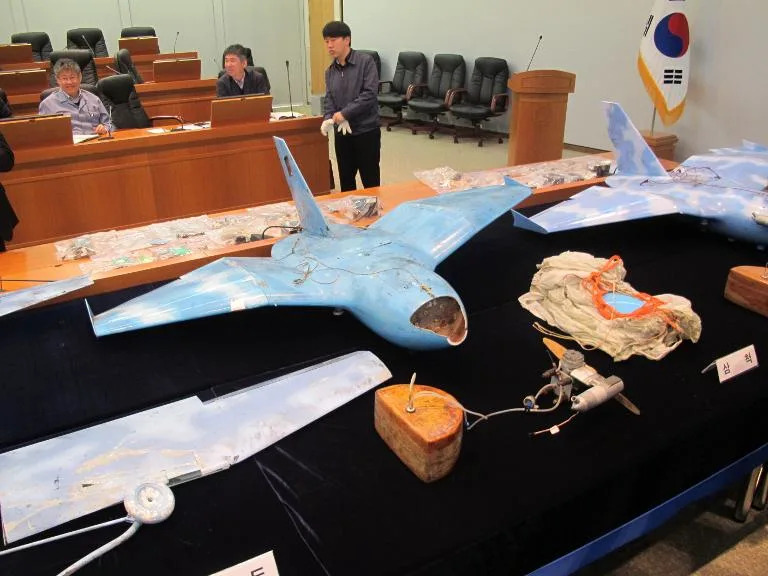On December 27, the South Korean military scrambled F-15K and KF-16 jets in response to what they initially believed to be an intruding North Korean drone but was later identified to be a flock of birds.
This incident comes a day after five North Korean unmanned aerial vehicles (UAVs) entered South Korean airspace. According to the South Korean media, the military reportedly alerted the local authorities and fire department in Ganghwa County, west of Seoul, that a drone had been sighted in the area.
After that, at around 3 p.m. local time, county officials sent a text message warning and advising residents to take precautions. The South Korean military then deployed F-15K and KF-16 fighters, KA-1 attack aircraft, and Apache and Cobra attack helicopters.
However, according to a JCS officer quoted in Korean media, the object was finally determined to be a flock of birds rather than North Korean drones. Nevertheless, the Air Force had reportedly been chasing the flock for three hours and had dispatched jet fighters and helicopters.
“We detected and tracked it from around 1.00 p.m. to 4.00 p.m. today,” the joint chiefs said in a statement, according to South Korean news outlet KBS News, the country’s national broadcaster.
In the past, flocks of birds have frequently been mistaken for North Korean drones. These unmanned aerial vehicles (UAVs) are less than two meters long and resemble large birds on the radar. A KF-16 fighter was launched in July 2019 after a flock of birds believed to be wild geese was mistaken for a UAV.

The false alarm came when tensions on the Korean Peninsula were at an all-time high. Seoul said that five North Korean surveillance drones crossed the border on Monday, with one of them making it as far north as the capital.
The South Korean jet fighters and helicopters could not intercept any of the UAVs, and the country’s air defense systems did not detect the UAVs. The JCS expressed regret over how the military had performed and pledged to “aggressively” organize its forces to counter the drone threat.
A South Korean aircraft also crashed while responding to the incursion, although both crew members were safe. According to a Defense Ministry official, the KA-1 light attack aircraft crashed immediately after leaving its base in Wonju, east of Seoul.
Pyongyang has raised tensions with its southern neighbor by shooting missiles into the Sea of Japan, also known as the East Sea. Seoul and Washington accused North Korea of inflaming regional tensions.
Meanwhile, Pyongyang stated that its launches were in retaliation to joint US-South Korean military drills, which it sees as a threat to its security.
Focus On ‘Overwhelming’ Capabilities Against North Korea
On December 28, the South Korean Defense Ministry announced that the country plans to increase defense spending by an average of 6.8% annually over the next five years, emphasizing securing “overwhelming” capabilities to confront North Korea’s expanding nuclear and missile threats.
Amid tensions brought on by North Korea’s missile tests last week and this week’s drone infiltrations across the inter-Korean border, the ministry unveiled the first midterm military strategy under the conservative Yoon Suk Yeol administration.
The blueprint for 2023–2027 includes several defense augmentation plans, such as securing more midsize submarines armed with ballistic missiles, more stealth fighters, and a strategy to maintain the current 500,000 active-duty personnel.
During the five years, the ministry plans to spend 331.4 trillion won (US$261 billion), of which 107.4 trillion won will be used to enhance defense capabilities, and 224 trillion won will be used to manage personnel, property, and equipment.

The plan aims to increase the nation’s defense spending from 54.6 trillion won this year to 57.1 trillion won for the next year, 61.4 trillion won in 2024, 66 trillion won in 2025, 70.9 trillion won in 2026, and 76 trillion won in 2027.
During this time, the average annual rise rate was 6.8%. However, a defense spending proposal must be approved by the Parliament.
The blueprint includes several plans to achieve “overwhelming” “three-axis” deterrence capabilities, which include the Kill Chain pre-emptive strike platform, the Korea Air and Missile Defense system, and the Korea Massive Punishment and Retaliation, an operational plan to take out the North Korean leadership in a major conflict.
- Contact the author at ashishmichel(at)gmail.com
- Follow EurAsian Times on Google News





